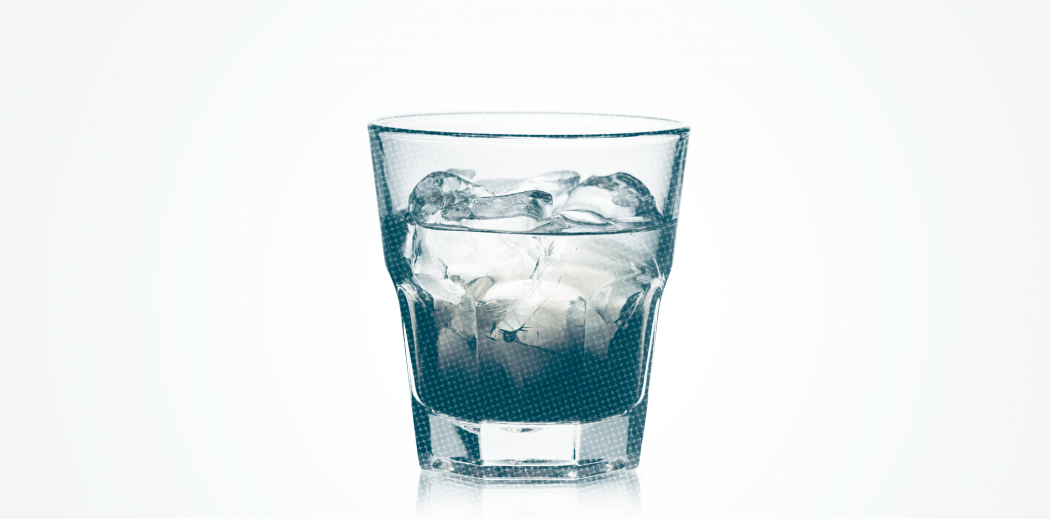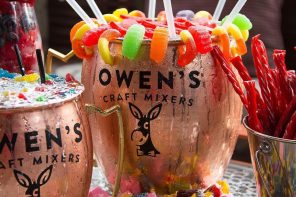When I hear “highball,” I think Great Gatsby, Mad Men, and other Golden Age-inspired pop culture references that embody general swanky-ness. Various encyclopedic sources say that “highball” actually refers to a family of mixed drinks – any cocktail that has a spirit, a larger amount of mixer, and ice.
So, it’s actually pretty simple and not all that posh. You might be familiar with classic drinks like gin & tonic, scotch & soda, vodka & tonic, and rum & coke – these are technically highballs. Though the highball began as a whiskey drink, it’s now acceptable to use just about any liquor you’d like.
The origins of the term “highball” are disputed, but there are several plausible theories. One of the more fun explanations is that it comes from a nineteenth century railroad signal. On American railroads, if a ball was raised on the signal post, the train could pass through without stopping. By some transitive power, this idea of getting somewhere fast inspired a cocktail that could be made and imbibed quickly. The term was also used in golf club bars in 19th century England, where the “ball” referred to whiskey served in a high glass.
So how do you make a perfect highball? It’s a little more complicated than one would think, considering the simplicity of the ingredients. In Esquire’s 1949 Handbook for Hosts, Dave Woodrich says to use a tall glass – “preferably uncolored, definitely sparklingly clean, admirably narrow-mouthed so soda will not collapse ahead of schedule” – and fill with several large ice cubes. Next, add the liquor, then cold sparkling water. Most importantly, “spare the spoon and save the drink.” Woodrich writes that silverware will squelch the bubbles, and that the carbonation is enough to “do the mixing job unassisted.” So if you thought your dorm room G&Ts in red SOLO cups were classy, think again.
Highballs are extremely popular in Japan, though they’re made a little differently. The Japanese highball was created because the Japanese enjoy alcoholic beverages while they eat, and it’s hard to drink straight whiskey during a meal. Adding soda water and ice dilutes it enough to eat without food without killing the liquor’s flavor. Japanese highballs first became popular after World War II, when the country was recovering and people wanted a cheap way to have a drink. Some versions of the drink don’t use ice, others have a dash of cola, and others must be stirred 13 and a half times clockwise. Talk about ritual!









Hey, Allison: nice story about the “Highball,” though you missed an important version–the “Highball” of the Great Gatsby era was always Scotch and Gingerale, a sort of Scotch and Soda with some additional flavor. In fact, the Scotch and Soda was pretty much always served as a “Highball,” using a siphon to add carbonated water to whiskey, which is why the siphon also became iconic in the Prohibition era. The whiskey was not necessarily Scotch (nor was the Scotch), and it was as likely home-made as imported (from Canada and other places where alcohol was legal). In other words, at speakeasies or private parties, because the whiskey used might not taste that good, the “Highball” became a staple order, also because that meant the customer didn’t have to order alcohol (Whiskey and Soda, Scotch and Soda) within hearing of potential Volstead Act agents planning a raid. (On a side note, contact me and I’ll tell you where there were some pesky typos).
In Detroit Michigan the ‘Highball’ was made with whiskey preferably Canadian Club which is rather light compared to say a bourbon and ginger ale, either Canadian Extra Dry Ginger Ale or Vernors Ginger Ale ( whose original plant was located at the corner of Woodward and Vernor)..,two distinct flavors…,but soda water was never used, that was for scotch.
My non-drinking mother used to say, when asked if she’d every tried alcohol :”I had a highball once, and didn’t like it.” In my western PA steel town, a highball was a mixed drink, and the only kind of mixed drink you could get in a “beer garden” as bars were called. They’d laugh if you ordered a Manhattan.